Political Perspective from the Wonders of the World: Cruising the Ancient Mediterranean
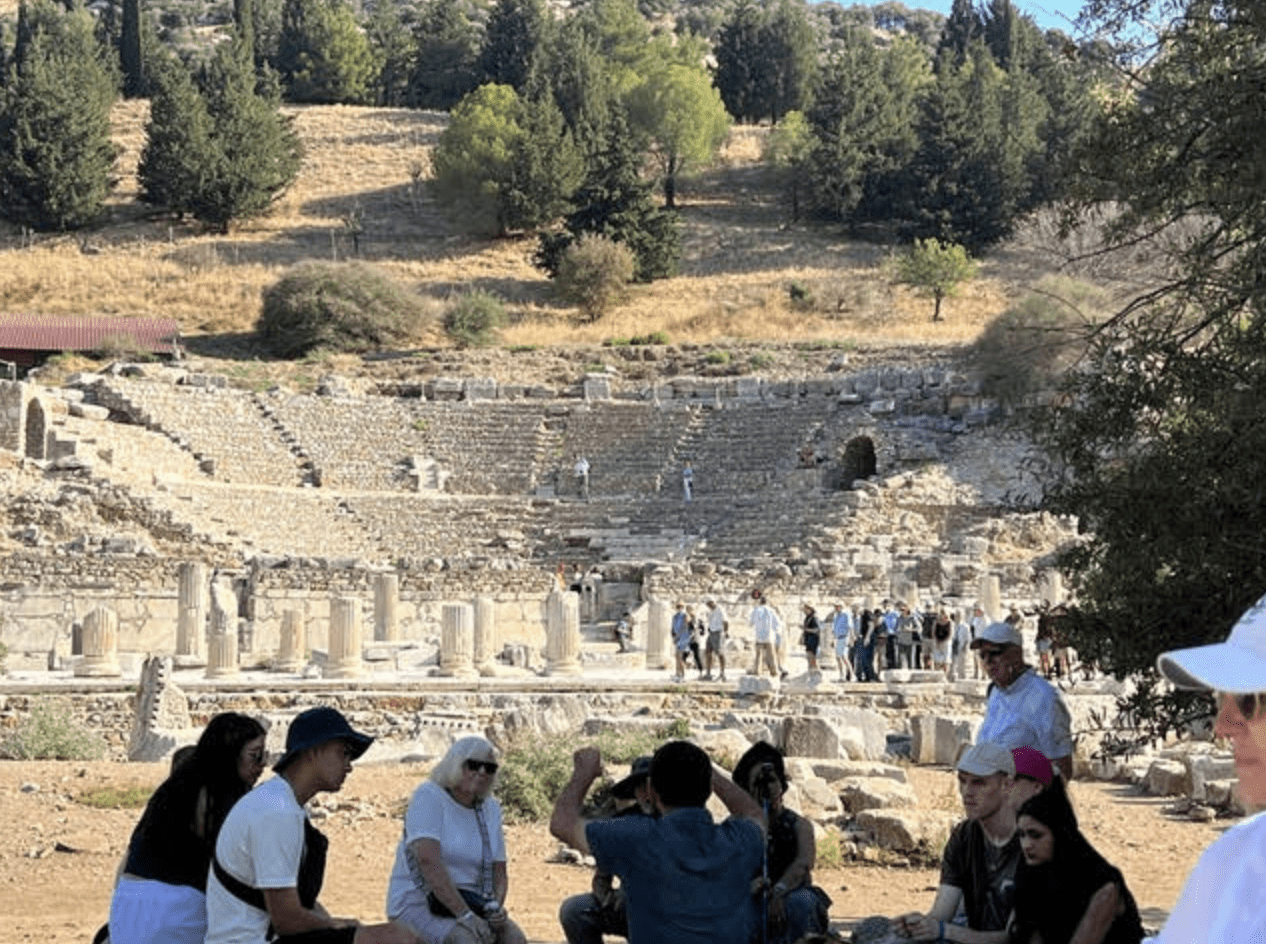 The Odeon of Ancient Ephesus, in Turkey
The Odeon of Ancient Ephesus, in Turkey
By Colin Robertson
January 2, 2025
Between the political upheaval in American politics and the melodrama unfolding in Ottawa recently, there are not many holiday options that offer the distance and perspective for a serious break from brain-rot, to make good use of Oxford’s word of the year, 2024.
As it turned out, eight days cruising the Aegean, bookended between extra days in Istanbul and Athens, did the trick.
When you’re pondering the epic romantic rivalries and disproportional score-settling that produced the Trojan War, or standing in Ephesus wondering how the mother of Jesus Christ spent her days in retirement, Donald Trump’s latest tweets and Justin Trudeau’s leadership woes tend to recede in your preoccupation horizon.
For my wife and traveling partner, Maureen Boyd, and I, our journey through nearly three millennia of civilization was a cultural and historical education and great fun.
I’d first visited Istanbul 50 years ago as a student, on the Greek equivalent of a Eurail pass. I’d taken Greek and Roman Culture and Civilization at university, and I’ve never lost interest in either. To appreciate the fundamentals and origins of geopolitics look first to Homer’s Iliad, Thucydides on the Peloponnesian War and Tacitus’ Histories.
I’d returned to Istanbul a couple of years ago, en route to Astana for a conference in the Kazakhstan capital. The twelve-hour layover allowed time for a Turkish Airlines cook’s tour of the city. It made me want to see more of this crossroads of history, continents, and civilizations: the thousand years of Byzantium; then Christianity’s Constantinople; then Istanbul of the Ottomans, Ataturk, and now Erdoğan.
My preparatory reading for this trip was eclectic. From my university days, I returned to Robert Graves’ Greek Gods and Heroes for Young Readers and enjoyed Andrew Mango’s Ataturk: The Biography of the Founder of Modern Turkey, but the best overall was Thomas Madden’s Istanbul: City of Majesty at the Crossroads of the World.
For atmosphere, I reread Eric Ambler’s Mask of Dimitrios and Helen MacInnes’ Decision at Delphi. I’ve since started Barbara Nadel’s Inspector Ikmen mysteries, which inspired the current BBC Turkish Detective series.
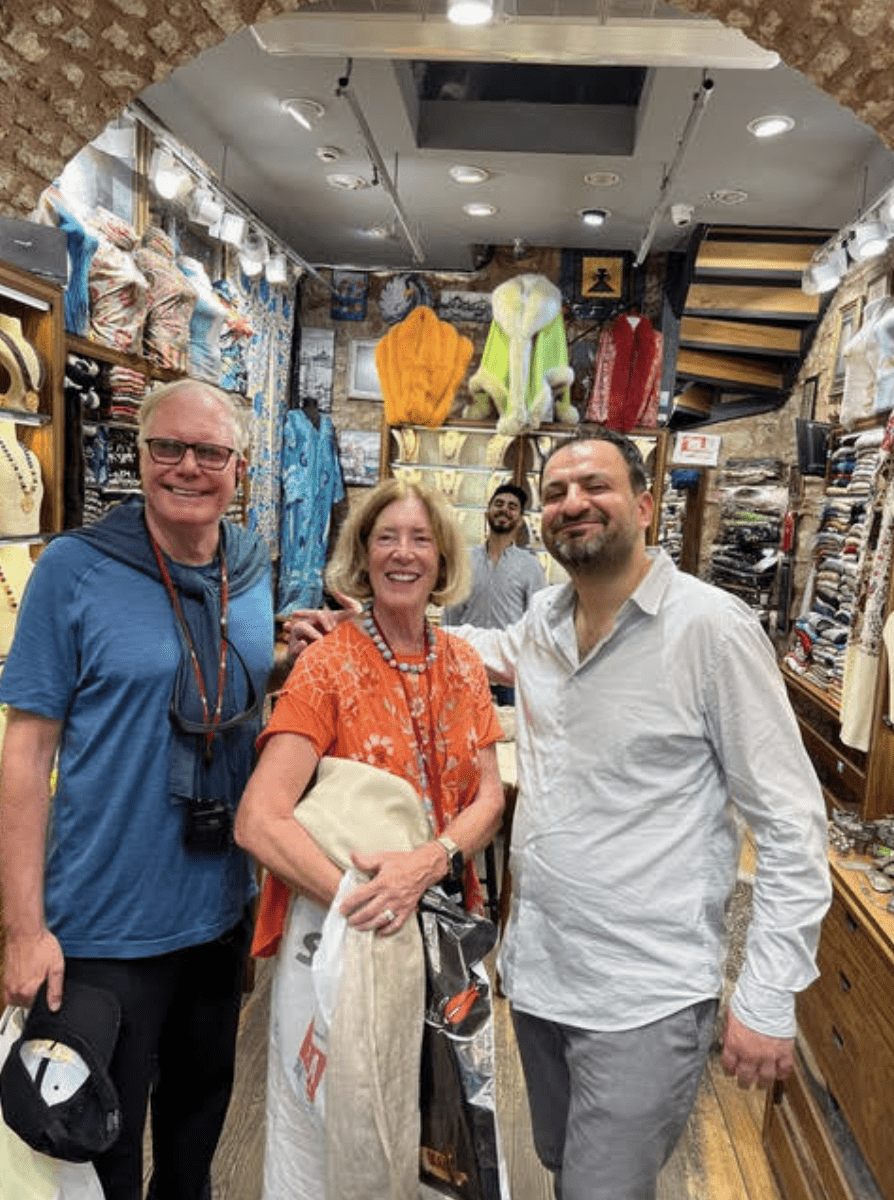
In the Istanbul Spice Bazaar
We booked three nights before our cruise in a boutique hotel in what was once Istanbul’s banking district. Over a magnificent Turkish breakfast on its rooftop restaurant, we scanned the city and harbour.
Over the next days, we marveled at the Blue Mosque but especially the Hagia Sophia. Originally the world’s largest Christian cathedral dating back to 537 AD, then a mosque from the fall of Constantinople in 1453, it became a national museum and Istanbul’s most famous landmark with the advent of Ataturk’s secular Turkey. Under the increasingly autocratic rule of Recep Tayyip Erdoğan, who has ruled Turkey as prime minister and president for the past 20 years, it is once more a working mosque — one of more than 20,000 built or refurbished, especially in the more devout rural areas, as part of Erdogan’s ongoing Islamization of Turkey. As our guide quipped, “another week, another mosque”.
We toured Topkapi Palace, also known as the Seraglio — residence of the Ottoman sultans — and inspected the quarters of the harem, the janissaries, and the eunuchs. We bought Turkish delight in the spice market and scarves in the winding maze of the centuries-old Grand Bazaar, host to more than 3,000 cafés and shops.
We walked the bridge crossing the Golden Horn and got lost until we Google-mapped the location of our 16th century hammam — an experience akin to a steamy car wash except that you are the one being scrubbed.
The email instructions on where to board the Viking Sea were vague but our concierge pointed out the ship from our restaurant rooftop in the Karaköy Yolcu Salonu passenger terminal, more commonly known as Galataport.
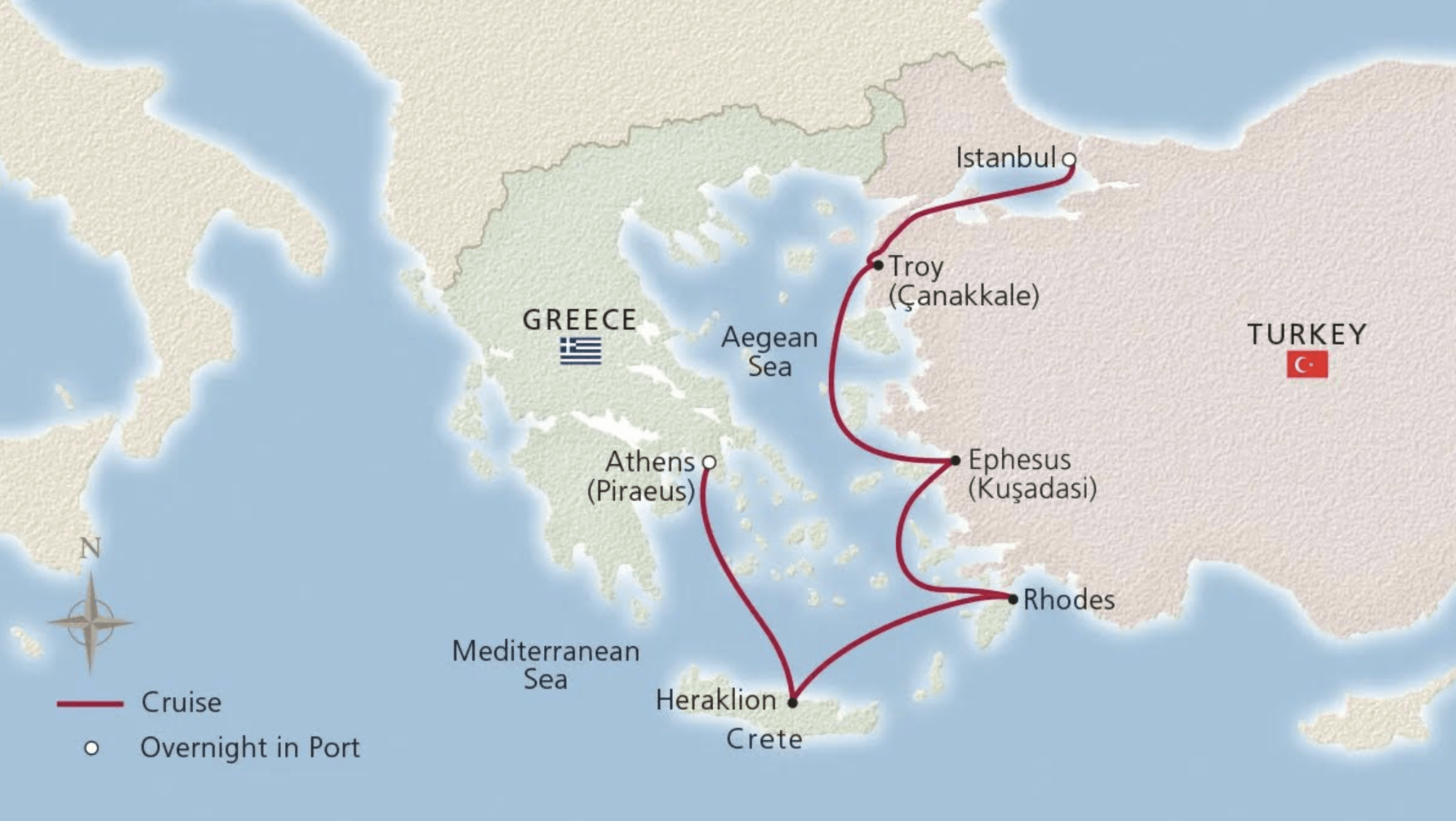 Viking
Viking
The first of our excursions was a tour around the Turkish Straits at either end of the Sea of Marmara: the Bosporus connecting it to the Black Sea and delineating a continental boundary between Europe and Asia, and the Dardanelles linking it to the Aegean. The 19-mile route is lined by hillside apartments and seaside villas that make greater Istanbul, with its population of nearly 16 million, the most populous city in Europe. The Marmara is filled with pleasure craft and commercial vessels transporting, among other products, grain from Ukraine shipped via Odessa, or Constanta in Romania.
That night, we sailed through the Dardanelles and the next morning we could see the Gallipoli monuments. The ill-fated military campaign engineered by Winston Churchill, who would later resign from cabinet over it, ran from February 1915 to January 1916. It resulted in more than 115,000 casualties, including British, French, Australian, New Zealand, Indian, and Newfoundland Allied troops, and over 250,000 Turkish and Arab troops. For Australians and New Zealanders, ANZAC Day each April 25th marking the Gallipoli campaign is as foundational to their national identities as Vimy Ridge is for Canadians.
 Premar
Premar
We docked in Çanakkale and walked along the boardwalk until we came to the 12-tonne Trojan Horse (above) gifted as a souvenir from the 2004 film Troy starring Brad Pitt. Then we bused to the archeological remains that comprise the most likely site of Troy, immortalized in Homer’s Iliad as the famous war whose casus belli was a love triangle gone wrong. Troy enjoyed many reincarnations, peaking as a gateway during the Roman Empire under Augustus but eventually losing its place as Constantinople and the Byzantine Empire rose to prominence. Our guide told us that many of Troy’s best treasures were spirited away in the late 19th century by German archaeologist Heinrich Schliemann, who is credited with rediscovering ancient Troy.
If Troy requires one to imagine what it was, this is not the case with Ephesus, our next day’s destination. Situated on the coast of Ionia, it is one of antiquity’s best-preserved Greco-Roman harbour cities and once one of the largest metropolises of the ancient world. It is believed, according to one school of theological thought and version of events, to be the final home and resting place of Mary, mother of Jesus Christ. Its temple of the Greek goddess Artemis is one of the Seven Wonders of the Ancient World and a re-creation is now in Istanbul’s Miniatürk Park.

At the Library of Celsus in Ephesus
The temple may be long gone but there was still much to see. Walking the length of ancient Kuretes Street, we saw frescoes on what were once stately homes, the towering facade of the Library of Celsus, built to house 12,000 scrolls, the massive amphitheater that sat 25,000 spectators, the Temple of Hadrian, the spectacular Great Theater and the Byzantine Basilica of St. John, said to have been built over the burial site of St. John the Apostle who likely wrote his gospel in Ephesus.
From the ancient marketplace of Ephesus, we made our way back to our ship, first navigating our way through the modern-day shopping – carpets, jewelry and high-end replica handbags – of the port of Kuşadasi.
The shopping generated by cruise ships is crucial for local economies. Tourism creates jobs and has grown bigger since COVID. For Turkey, tourism accounts for about a fifth of GDP and one in 10 jobs. In the case of Greece, estimates range from 20 to 30 per cent of the country’s GDP coming directly and indirectly from tourist activities. But it is also obliging governments to factor-in the impact on the environment and local communities to understand the trade-offs and to manage tourism sustainably. As the OECD 2024 Tourism Trends observes, “Governments, at all levels, have a role to play in shaping tourism development to respond to these challenges, capitalize on opportunities, and deliver better outcomes.”
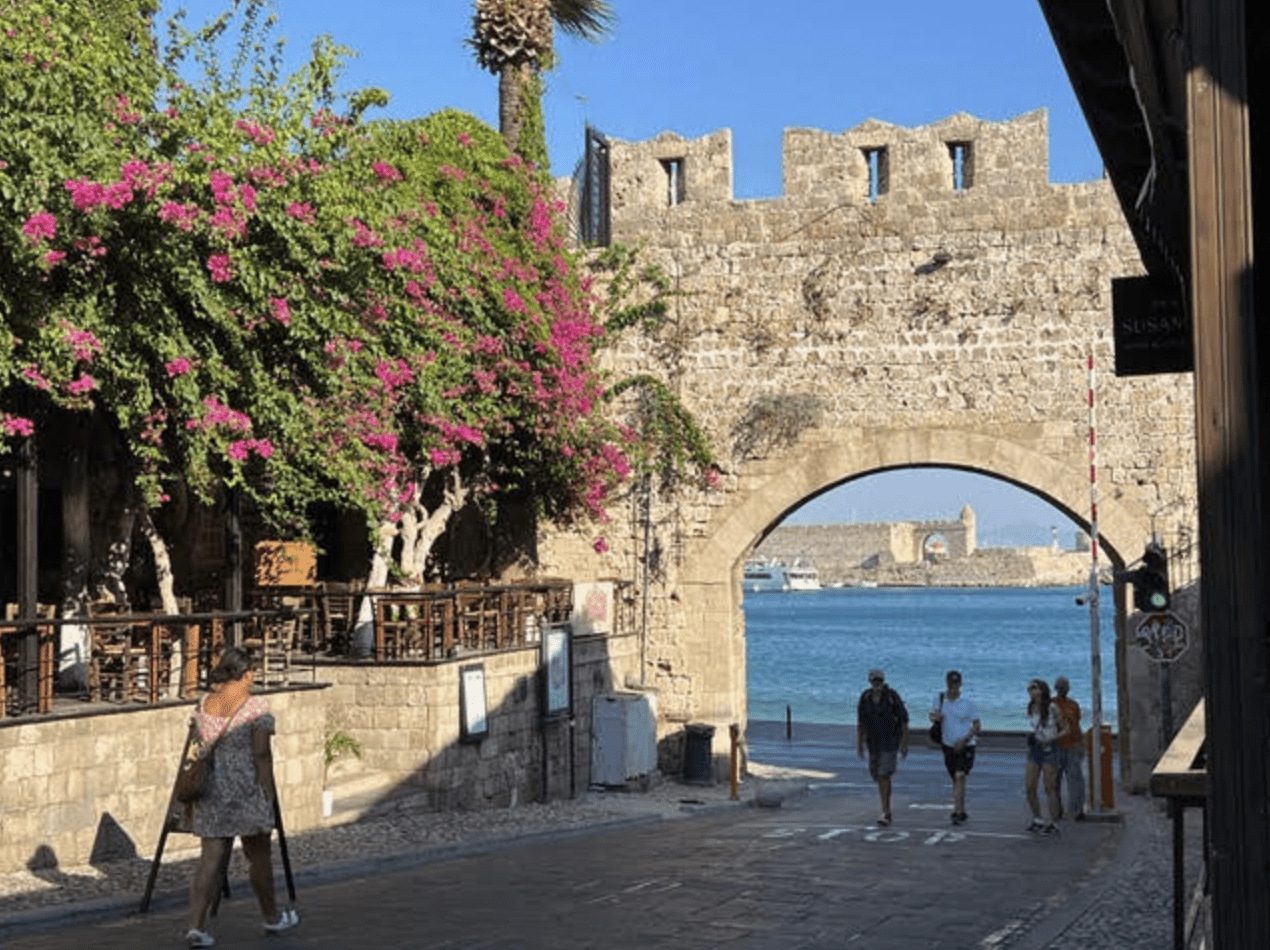 The Old City of Rhodes
The Old City of Rhodes
The next morning, we docked in Rhodes. Once upon a time its harbour was the site of the Colossus, the statue of the Greek sun god Helios. Another of the Seven Wonders of the Ancient World, it inspired the Titan of Braavos in Game of Thrones. We strolled the cobblestones of this medieval Crusader town, starting with the Street of the Knights, passing modern ships and the 15th-century Hospital of the Knights of St. John, now home to its archaeological museum. We toured the 14th century Palace of the Grand Masters with its crenellated walls and massive towers. Afterwards, we walked the beach, waded in the sea, and watched other cruise ships come into port.
Next stop was Heraklion on the isle of Crete. Blessed with generous beaches, soaring mountains and coursing rivers, Crete was once the home of the Minoans, Europe’s earliest recorded civilization. We bused to the archeological site of the palace of King Minos with its labyrinthine corridors and Throne Room dating back to the 15th century BC. According to mythology, Minos’s wife Pasiphaë gave birth to the Minotaur, half-bull and half-man. Theseus later destroyed the beast. Heraklion would enjoy a renaissance, growing from the riches of the Venetian Empire, that ruled for four centuries.
Our voyage concluded the next morning when we sailed into Piraeus, the main port of Greece, 9 km from Athens. One of Europe’s biggest passenger ports, it has been managed since 2016 by the Chinese shipping company Cosco which remains a topic of controversy.
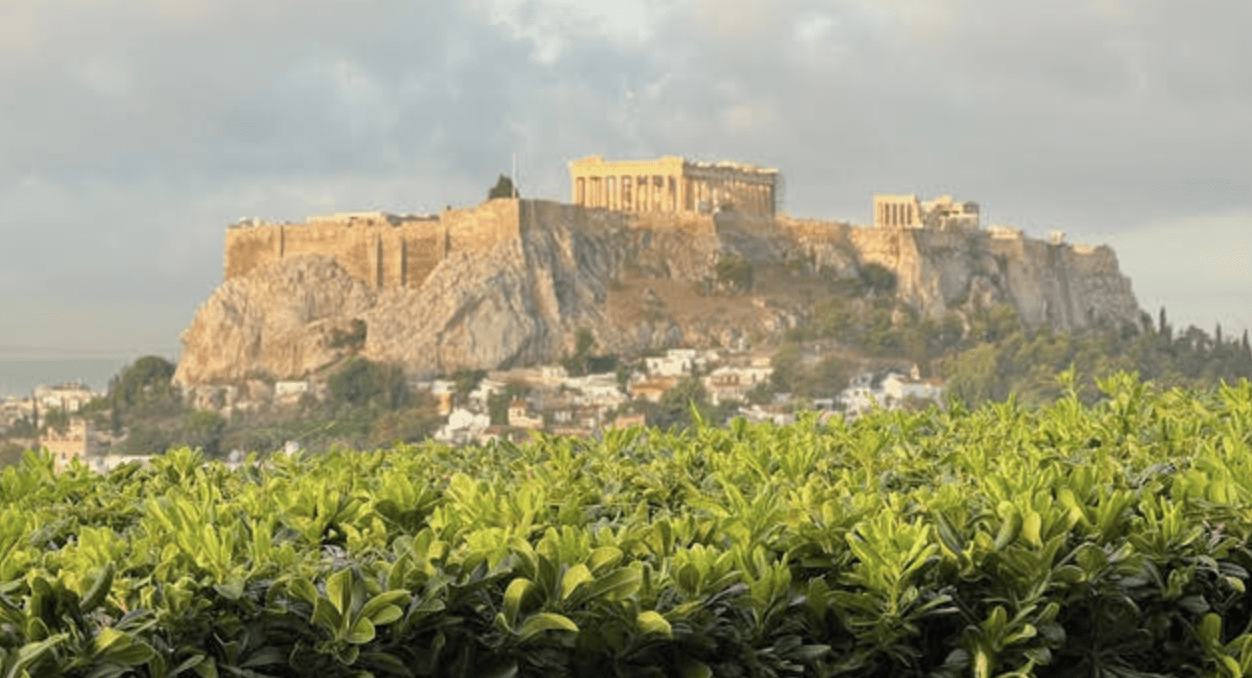
The Acropolis from our hotel
Within 30 minutes, we were awed by the stunning views of the Acropolis from the historic Hotel Grande Bretagne in Syntagma Square. The hotel sits beside the Presidential Mansion and the Hellenic Parliament, which, in earlier times, housed the Royal Palace. Nearby, the Tomb of the Unknown Soldier is guarded by the Evzones — traditional light infantry clad in their 19th-century white jackets, wide skirts, and slippers.
The Acropolis looked like a mirage, and we could imagine Socrates, Plato, and Aristotle right there, debating ideas of government and democracy, echoing across time to the very present.
Contributing Writer Colin Robertson, a former career diplomat, is a fellow and host of the Global Exchange podcast with the Canadian Global Affairs Institute in Ottawa.
